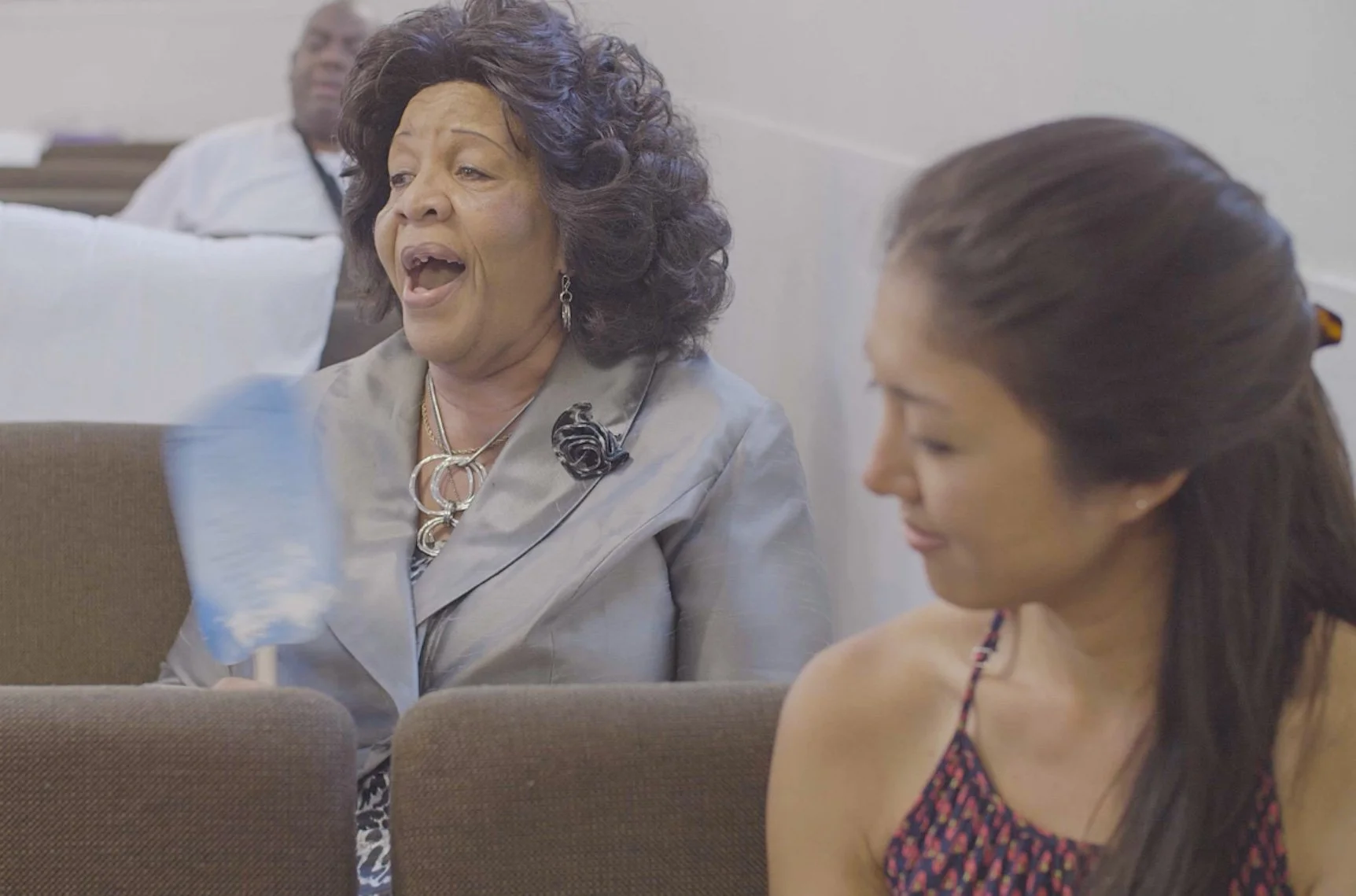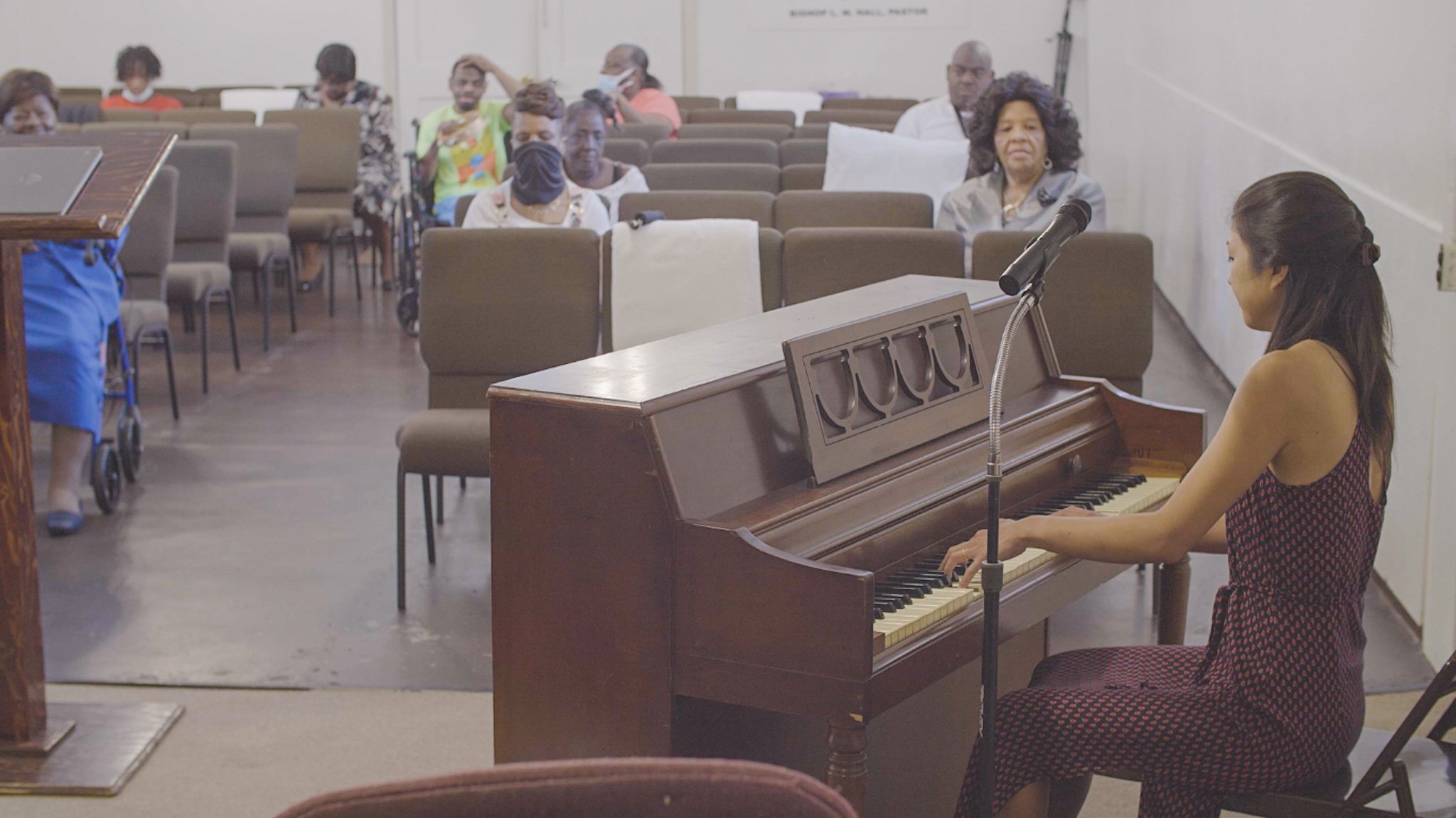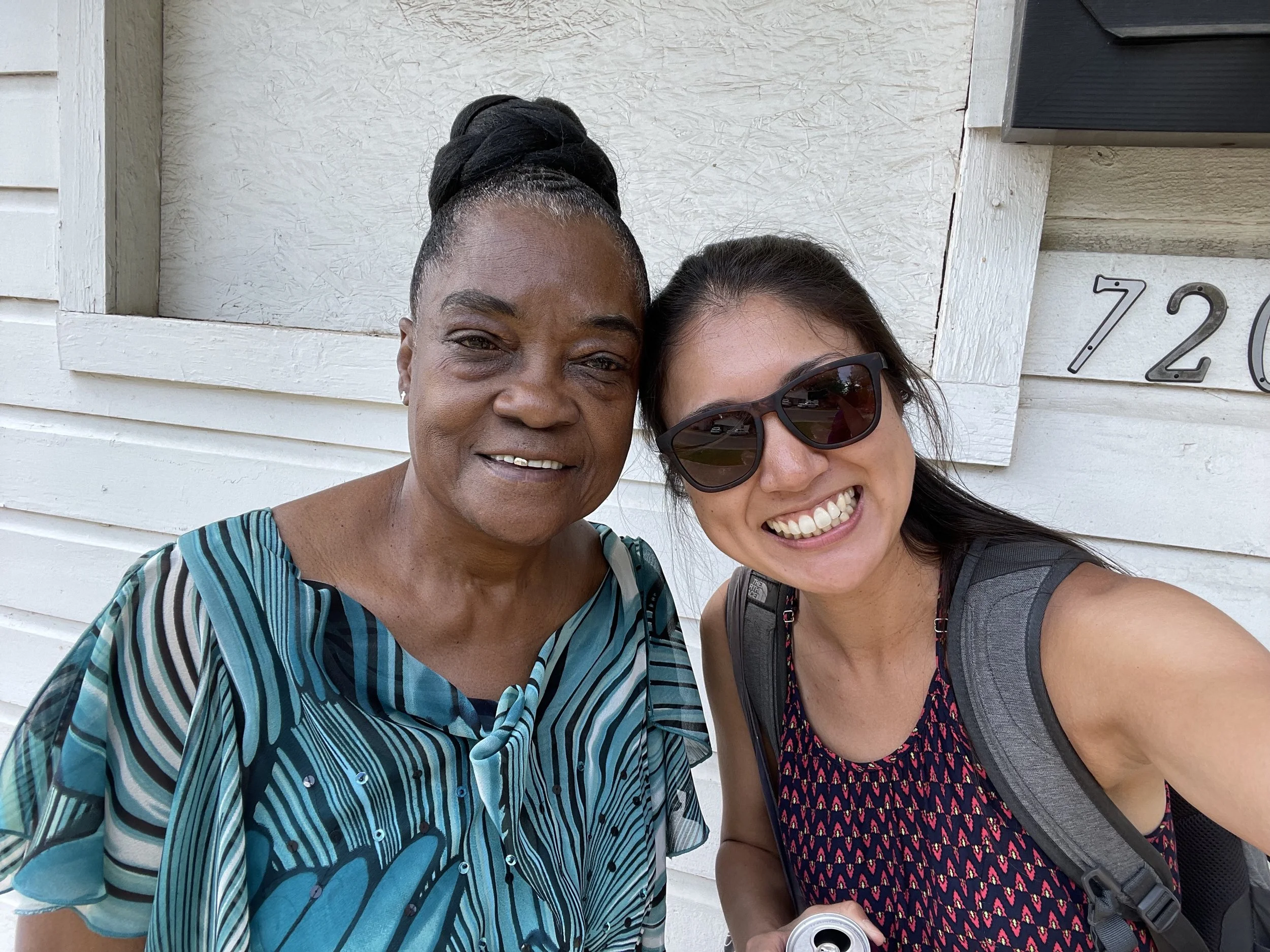Natchitoches, LA
April 24, 2022
(My time in Natchitoches is a two-part story. For part 1, go here.)
As we headed to the address on Lee's business card, I wondered if church was actually held at his home - Google didn’t turn up anything at the address, and the way he talked about his congregation, it seemed very homegrown. Either way, we were giddy with anticipation, glad to finally have a destination and an invitation.
We drove down a narrow residential street to the destination, and indeed a weathered white church stood. Although we were 30, 40 minutes early to the start of service, folks were already gathered and raring to start. I started to worry - a Black church is, as I understand, historically a sacred place; a place not only for worship, but a place where civil movements were plotted, a place where lengthy debates occurred on visions of Black Americans’ future, a safe place for the community. Was it really okay for us to be there? Once Lee saw we had arrived, he greeted both me and Joel as if we were his best, oldest friends, and I immediately felt relief.
He asked, “You're gonna play something, right?” I didn’t know if I should be expecting to play, but I immediately answered yes. He took me into the church kitchen where they had an unused upright (he used an electric keyboard himself). I played it for literally 5 seconds and declared it was a much better instrument than mine. We dragged their piano into the main hall, rather than going through the hassle of fetching our piano from the van.
Lee’s church service was unlike anything I’d experienced before: spontaneous shouting in praise, breaking out into song (always gospel, and everyone always knew if it was solo or tutti), call and response, taking turns at the mic for testimonies, more spontaneous singing - all at MAXIMUM volume, with so much fervorn. Everyone was hoarse within 20 minutes. Everything was beautifully choreographed and everyone knew precisely when singing was solo or congregational, when to give a certain person the floor to give praise. Lee accompanied everything on keyboard without break - vamping and noodling even when people were speaking/shouting. I felt like the energy would knock me over.
Eventually Lee quieted everyone down (it took a few tries!!), recounted in detail how he and I met on the streets of downtown Natchitoches a few days prior, and had made a connection through music and my piano, and then gave me the floor. Everyone in the congregation had such a specific way of speaking (cadence, inflection, choice of words, repeated phrases) that I felt out of place saying a few sentences “normally” - but I did, and then began playing Florence Price’s 2nd Fantaisie Nègre.
So, remember how I had only tried out this piano briefly? Once I started, it became known to me that actually half of the keys were not working - they were stuck and not depressing. The piece began as an awkward patchwork, an outline of a melody interspersed with holes of silence. I wanted to stop and laugh about it and explain the situation, but the mood of the service so far had been so unbelievably intense and serious, I couldn’t do that. I played for a couple minutes, rapidly weighing my options. This sounded ridiculous. I stopped, calmly explained the piano wasn’t functioning, and quickly walked over to Lee’s keyboard to resume playing.
When I played a note, I had to stop. His keyboard was on a transposition setting, so that the notes I played weren't the actual notes that sounded. The transposition function may be great for harmonic purposes if you're improvising and jamming, but for a classical player who’s playing music from memory, the cognitive dissonance between the notes I’m playing and what I’m hearing wreaks havoc on memory. I turned to Lee and his grandson for help, and they tried to fix it, to no avail.
At this point I had interrupted the flow so much, I decided it would be fine as is and performed the piece. Everyone was visibly and audibly enjoying the music, nodding along and murmuring their praises. It didn't matter what I was playing on - I knew this performance situation might be once-in-a-lifetime for me, and I tried to focus and give it my all.
Everyone in the congregation was so great and welcoming and lovely and grateful for our visit and my music. They hugged me and Joel afterwards and wanted to keep talking outside, offering us grape Fantas under the hot Louisiana sun. There was a lady (she had been the loudest and seemed most possessed in the service) who told me she had lost everything in a fire two weeks ago, which was started by her ex-husband who now has Alzheimer’s. Despite the tragedy, she had a strength and dignity about her as she believed God would lead the way. Even though she had nothing and I did not ask for it, she insisted on giving me a tithing. Witnessing her incredible strength, in no small part bolstered by her dedication to her religion, was astonishing.
My visit to Lee’s church played a central role in our Gather Hear Louisiana film - incredibly, everyone was so generous not only in welcoming us wholeheartedly, but also letting Joel film absolutely everything he wanted to. We are eternally grateful to everyone in the Lee Taylor Eastside Chapel COGIC congregation, for profoundly affecting our journey and our film.





